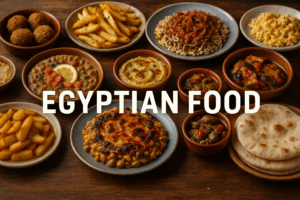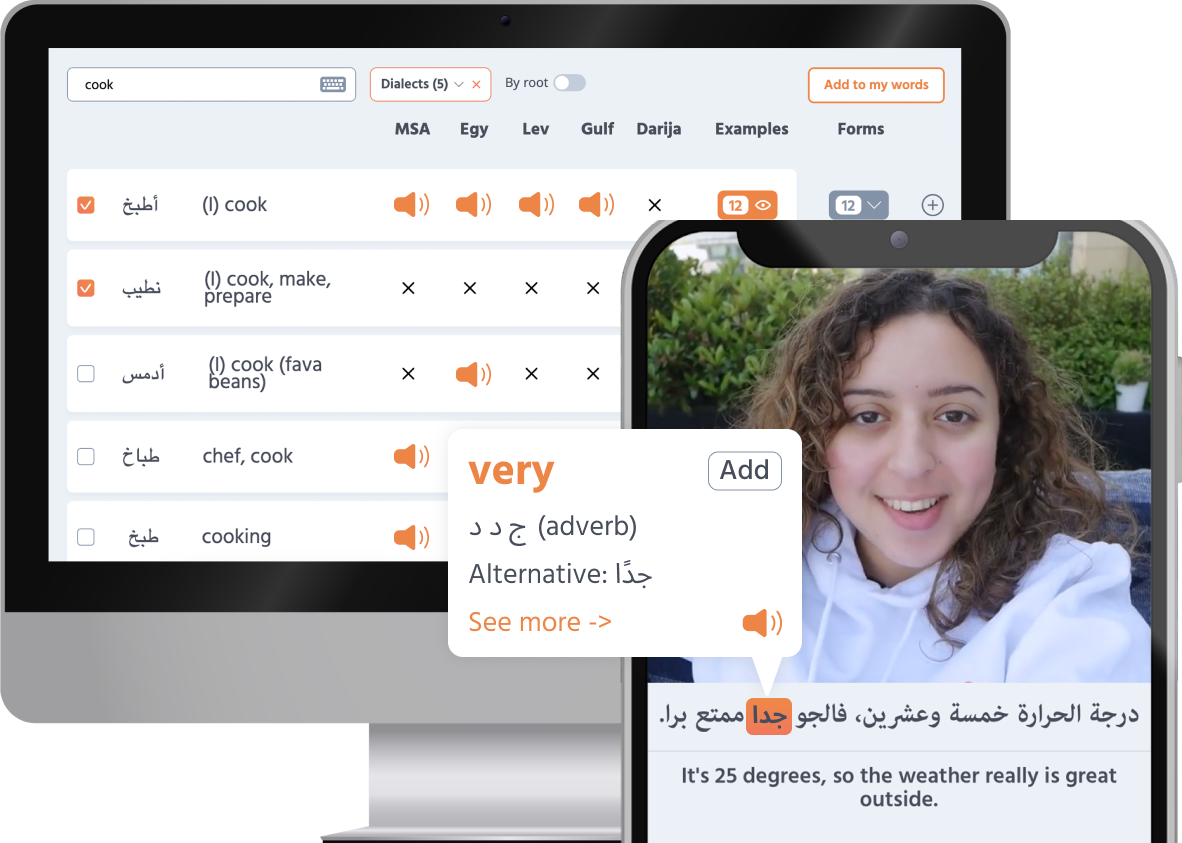Imagine two old friends who drifted apart over the years but still share memories from way back. That is kind of what Arabic and Hebrew are like—two ancient languages with a lot in common. In this article, we are going to dive into the shared roots of Arabic and Hebrew and explore their similarities , differences, and the ways they have influenced each other.
Shared family Arabic and Hebrew are both part of the Semitic language family—a group of languages that have been around for thousands of years. They started from the same source, what we now call Proto-Semitic, and over time, they branched out into the distinct languages we know today.
As time passed, the Semitic languages spread across the Middle East and beyond, evolving as they mixed with different cultures. Arabic and Hebrew developed their own identities but still share a lot of the same DNA from their ancient roots. This shared history is what makes people often wonder, “are Hebrew and Arabic similar?” or “is Hebrew close to Arabic?”
Linguistic similarities between Arabic and Hebrew Grammatical structure One cool thing about Arabic and Hebrew is how they build words. Both languages use a system where words are created from a set of root consonants, which then take on different forms depending on the patterns applied. For example, the Arabic root كَتَبَ
(related to writing) has a Hebrew cousin כתב
. In both languages, different words can be created using the aforementioned root words to give different meanings related to the act of writing. This, among other similarities, shows how these languages are linked, which often raises the question, “how similar are Arabic and Hebrew?”
Similar words in Arabic and Hebrew Here’s where things get interesting—Arabic and Hebrew vocabulary include many words that sound similar, especially for pronouns, propositions, numbers, and body parts.
Pronouns English Hebrew MSA Levantine I אני
أَنَا
أنا
You (Male singular) אתה
أَنْتَ
انت
He הוא
هُوَ
هوّي
She היא
هِيَ
هيّي
We אנחנו
نَحْنُ
نحنا
You (Male plural) אתם
أنْتُمْ
إنتو
You (Female plural) אתן
أَنْتُنّ
إنتو
They (Male) הם
هُمْ
همِّ
They (Female) הן
هُنّ
هني
This (Male) זה
هَذَا
هادا
What מה
مَا
شو
Who מי
مَنْ
مين
When מתי
مَتَى
ايمتى
Why למה
لمَ
ليش
All כל
كل
كل
All of us כולנו
كُلُّنَا
كلنا
Prepositions English Hebrew MSA Levantine In ב
ب
ب
On/Upon על
على
عَ
From מ
من
من
To/For ל
ل
ل
Numbers English Hebrew MSA Levantine Four ארבע
أَرْبَعَة
أربعة
Five חמש
خَمْسَة
خمسة
Seven שבע
سَبْعَة
سبعة
Nine תשע
تِسْعَة
تسعة
Ten עשר
عَشْرَة
عشرة
Twenty עשרים
عِشرِينْ
عشرين
One hundred מאה
مِئَة
ميّة
One thousand אלף
أَلْفْ
ألف
Two thousand אלפיים
أَلْفَيْن
ألفين
Body parts English Hebrew MSA Levantine Head ראש
رأس
راس
Eye עין
عين
عين
Ear אוזן
أذن
إدن
Tooth שן
سن
سن
Hand יד
يد
إيد
Nose אף
أنف
أنف
Finger אצבע
إصبع
اصبع
Other vocabulary English Hebrew MSA Levantine Peace שָׁלוֹם
سَلَامْ
سلام
King מלך
مَلِكْ
ملك
Night לילה
لَيْلْ
ليل
River נהר
نَهْرْ
نهر
House בית
بَيْتْ
بيت
Brother אח
أَخّْ
أخ
Sun שמש
شَمْسْ
شمس
Gold זהב
ذَهَبْ
دهب
Sky שמיים
سَمَاءْ
سما
Vineyard כרם
كَرْمْ
كرم
Phonetic parallels If you listen closely, you’ll notice some phonetic similarity between Arabic and Hebrew . For example, the ِArabic خ
and the Hebrew ח
sound similar. Both languages have the letter “Ayin”, which in Arabic is ع
and in Hebrew is ע
. In ancient Hebrew, this letter had a distinctive gutteral sound, similar to the one in Arabic. When European Zionists brought Hebrew back into daily use during the late 19th century, they had difficulty pronouncing the gutteral sound, and so they converted it into an “a”. Nevertheless, when elderly Israeli Jews from Arab countries speak the language, they sometimes pronounce it the gutteral way, as a result of their Arabic-speaking roots.
Similarities in alphabets Let’s talk about the Arabic vs Hebrew alphabet. Both Arabic and Hebrew are written from right to left and use a script where the consonants carry most of the weight, with vowels either implied or added as marks that we call diacritics. Diacritics are called تَشْكِيلْ
or حَرَكَاتْ
in Arabic while in Hebrew they are called ניקוד
(note the resemblance to the Arabic word نُقَطْ
). While the scripts look different, they actually have some similar shapes and sounds, thanks to their shared ancestry. For instance, the Arabic letter س
and the Hebrew letter שׂ
look rather similar, both representing the “s” sound. It’s fun to compare Arabic vs Hebrew writing to see these connections.
The influence between Arabic and Hebrew Centuries-old influence Throughout history, Arabic and Hebrew borrowed words from each other, especially in regions where Jews and Arabs lived close together. Many Jewish communities who used to live or are living in Arab lands incorporated Arabic into their daily lives, infusing it with Hebrew elements. During the Middle Ages when Jewish scholars were deeply engaged with Arabic culture, they borrowed Arabic words like تَارِيخْ
which means date. Conversely, in ancient times, Jewish liturgical texts and practices influenced Arabic in regions with significant Jewish populations, for example with the words السَبْت
(Saturday), جهَنَّمْ
(hell), and نَذْرْ
(vow).
Modern influence In modern times, Palestinian Arabic – a subdialect of Levantine Arabic – has influenced contemporary Hebrew, particularly in slang. Here are examples of Arabic influence on contemporary Hebrew:
English Hebrew Palestinian Arabic Literally: I swear by God. In both languages, it’s commonly used as a casual expression similar to “really?” or “seriously? וואלה
وَالله
Let’s go! יאללה
يلا
Muscular, tough guy אבדאי
قبضاي
Perfect!, Awesome! עלא כיף
على كيفك
Genuine, authentic אסלי
اصلي
Straight-forward speech דוגרי
دغري
My friend, dude חביבי
حبيبي
Local, native בלדי
بلدي
Knock-on-wood (A term used to repel the Evil Eye ) חמסה
خمسة
Tough guy, hero ג’דע
جدع
Used to wish someone a quick recovery or well-being סלאמתו
سلامتك
Literally: “being high” in Arabic. In Hebrew, it means “chilling out” סטלה
سطل
Literally: “your lord” in Arabic. In Hebrew, it’s used to express frustration, like “come on” or “damn it.” רבאק
ربك
Literally: “curse your father” in Arabic. In Hebrew, it’s often used in a teasing or affectionate way, similar to how someone might say “you rascal” or “you devil” in English. ענעל אבוק
إنعل أبوك
“Stoned” or “high” מסטול
مسطول
Bad luck or jinx נאחס
نحس
Literally: “sweetest” or “nicest” in Arabic. In Hebrew, it’s used to mean “great,” “cool” or “awesome.” אחלה
أحلى
Happy, satisfied מבסוט
مبسوط
Hello, hi (in Hebrew, it’s an informal way to greet someone) אהלן
أهلاً
Literally: “joy” or “happiness” in Arabic. In Hebrew, it’s a derogatory slang term used to describe a woman who’s perceived as loud, flashy, or “trashy.” פרחה
فَرْحَة
Nuisance (literally: it hurts the head) בוג’ראס
بيوجع الراس
Crazy, insane מג’נון
مجنون
Literally: “scandal” in Arabic. In Hebrew, it’s used to describe an embarrassing situation, blunder, or social faux pas פאדיחה
فضيحة
Enough, finished חלאס
خلاص
A lot of profanity in Hebrew slang comes from Arabic as well:
English Hebrew Palestinian Arabic Literally: “pimp” in Arabic. In Hebrew, it’s often used to describe someone who is perceived as a thug, a low-class person, or someone with a rough, uncultured attitude. In Arabic, it could also describe a sleazy person. ערס
عرص
slut, whore שרמוטה
شرموطة
jerk, asshole (literally: Someone who is fucked) מניאק
منيك
shit חרא
خرا
Fuck you (literally: your mother’s pussy) כוס אמק
كس أمك
Fuck you (literally: your sister’s pussy) כוס אחתק
كس اختك
Similarly, modern Hebrew has influenced Palestinian Arabic. You can find some examples of those loanwords in the following table:
English Hebrew Palestinian Arabic Yoghurt, sour cream שמנת
شمينت
Traffic lights רמזור
رمزون
Air conditioner מזגן
مزجان
Mobile phone פלאפון
بليفون
OK בסדר
بسيدر
Ice cream גלידה
جليدا
Appliance מַכשִׁיר
مخشير
Linguistic differences: diverging paths Historical evolution Arabic and Hebrew both stem from the ancient Semitic language family, but their paths of evolution diverged significantly.
Arabic began its developmentcolloquial Arabic spoken today in different parts of the Arab world. Modern Standard Arabic , derived from Classical Arabic, was formalized in the 19th and 20th centuries to serve as a unifying language for education, media, and literature across Arabic-speaking countries.
Hebrew also traces its origins to the ancient Semitic languages, but its evolution took a different path. Biblical Hebrew, the language of the Hebrew Bible, was spoken from around the 10th century BCE to the 4th century CE. After this period, Hebrew gradually fell out of everyday use and was largely confined to religious, literary, and scholarly contexts. By the 6th century CE, it had become a liturgical language, with spoken Jewish communities adopting Yiddish or Ladino. The revival of Hebrew began in the 19th century with the efforts of the Zionist movement, led by figures like Eliezer Ben-Yehuda . This revival transformed Hebrew from a classical language into Modern Hebrew, which was adopted as the official language of Israel in 1948. Modern Hebrew incorporates contemporary vocabulary and grammar while retaining its ancient roots.
In short, Arabic evolved from its Classical form into a range of regional dialects and a standardized modern language, while Hebrew experienced a period of decline and liturgical use before being successfully revived as a modern spoken language.
This divergence led to distinct linguistic identities, making it clear when people ask, “Is Hebrew related to Arabic?” that while they share roots, they have grown apart in many ways.
Dialects and regional variations Arabic, with its numerous dialects like Levantine, Egyptian , Gulf, and Darija , presents a diverse linguistic landscape. In contrast, modern Hebrew is more standardized, though regional accents and influences are still present. This difference is often highlighted in discussions comparing Arabic vs Hebrew language, which requires discussion of different colloquial Arabic forms.
Borrowed words and external influences Both Arabic and Hebrew have incorporated words from other languages due to historical and cultural interactions. Arabic has absorbed terms from Persian , Turkish, Italian, French, English , Spanish and other European languages, while Hebrew, especially after its revival, has borrowed from Yiddish, Russian, German, and English. These borrowed words reflect the languages’ adaptive nature and their ability to influence and be influenced.
Conclusion: a tale of two cousins Arabic and Hebrew, though distinct, have continually shaped each other through centuries of interaction. These languages, rooted in a shared past, have influenced one another in ways that go beyond mere vocabulary. They have left lasting echoes in each other’s sounds, structures, and cultural expressions, reminding us of the deep connections that languages, like the people who speak them, share across time and space. This relationship makes it clear why people often ponder, “Are Arabic and Hebrew similar?”
Curious about the connections between Arabic and other languages? Then dive into our articles exploring the fascinating links between Arabic and French, Italian , English , Spanish , and Persian !
Oh, and by the way… If learning Levantine Arabic at your own pace, with fun, real-world videos sounds like your style, then Playaling could be exactly what you’re looking for!
With Playaling, you’ll dive into Arabic just as it’s spoken in Lebanon, Syria, Jordan, and Palestine. Our diverse range of videos has it all—from everyday conversations and cultural moments to music videos, TV and movie clips, influencer content, news broadcasts, and inspiring talks.
Our interactive captions let you tap any word for instant translations, context, and audio. So, real Levantine content becomes accessible with just a click. Miss something? No problem—rewind and listen as often as you need, or hover over subtitles for quick definitions.
Spot a word you want to learn? Save it to your personalized word set, or dive into curated sets for focused practice and easy review.
Interactive exercises let you dive in and practice what you’ve learned.
Need to look something up? The Audio Dictionary has you covered with clear human pronunciations and real world examples.
It’s a learning experience that keeps you engaged, bringing authentic, real-world Arabic closer to you every step of the way.
Give it a try!









